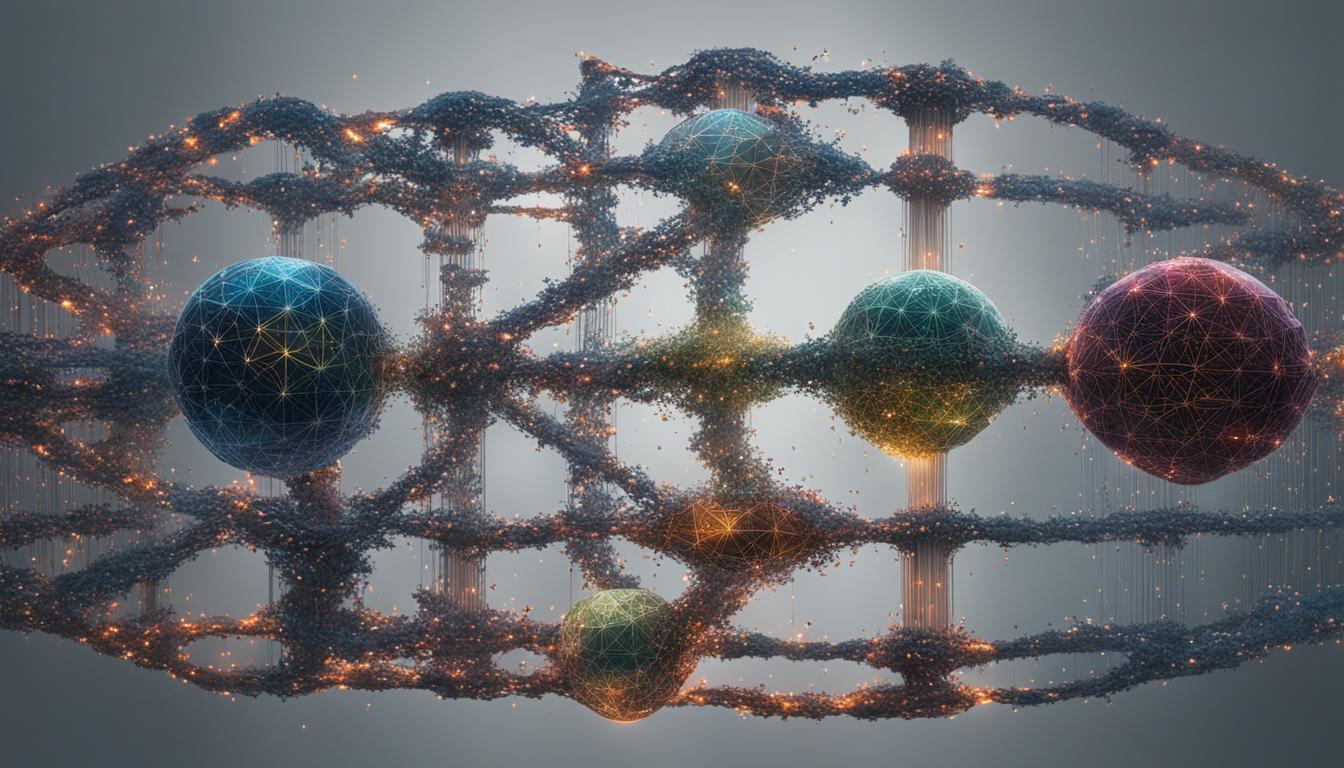Evolutionary algorithms are a fascinating type of artificial intelligence (AI) that belong to the broader field of evolutionary computation. These algorithms are inspired by biological evolution and employ a metaheuristic or stochastic optimization approach to solve complex problems. They are essentially population-based trial and error problem solvers, generating an initial set of candidate solutions and progressively refining them through iterative processes.
Evolutionary algorithms have found extensive applications in computer science and have proven to be highly effective in optimizing a wide range of problem settings. In the realm of AI, they offer a unique perspective and approach, enabling the creation of highly optimized solutions through the emulation of natural selection mechanisms.
Contents
- 1 How Evolutionary Computation Evolved in the Field
- 2 Applications and Techniques of Evolutionary Computation
- 3 Evolutionary Computation in Modern AI Research
- 4 Conclusion
- 5 FAQ
- 5.1 What is evolutionary computation?
- 5.2 How do evolutionary algorithms work?
- 5.3 What are the branches of evolutionary computation?
- 5.4 Where is evolutionary computation applied?
- 5.5 How does evolutionary computation contribute to artificial intelligence research?
- 5.6 What is the future of artificial intelligence and evolutionary computation?
- 6 Source Links
Key Takeaways:
- Evolutionary algorithms are a subset of artificial intelligence and fall under the broader field of evolutionary computation.
- These algorithms utilize a trial and error approach and are inspired by biological evolution.
- They generate an initial set of candidate solutions and iteratively refine them through selective processes.
- Evolutionary algorithms have wide-ranging applications and can optimize various problem settings.
- They play an influential role in the future of AI by combining the strengths of deep learning and evolutionary computation.
How Evolutionary Computation Evolved in the Field
Evolutionary computation as a field traces its roots back to the 1950s and 1960s, when it witnessed the development of three distinct branches: evolution strategies, evolutionary programming, and genetic algorithms.
These branches emerged independently, each focusing on utilizing principles of biological evolution to solve computational problems. Lawrence J. Fogel pioneered research on evolutionary programming in the United States in 1962, while Ingo Rechenberg and Hans-Paul Schwefel introduced the concept of evolution strategies in Germany in 1964. John Henry Holland made significant contributions to the field by further developing genetic algorithms at the University of Michigan in the 1970s.
Initially, these branches differed in their approaches to selection, mutations, and representation of genetic data. However, over time, the distinctions between them began to blur, leading to the term “evolutionary computation” that encompasses all four paradigms.
Additionally, genetic programming emerged as a branch in the early 1990s. Unlike the other approaches, genetic programming treats programs themselves as the subject of evolution, expressed in a high-level programming language.
Evolutionary computation continues to evolve and find applications in various fields, including artificial intelligence and machine learning.
To showcase the historical development of evolutionary computation in a visually engaging format, the following table provides a summary of its key milestones:
| Branch | Year | Contributors |
|---|---|---|
| Evolution Strategies | 1964 | Ingo Rechenberg, Hans-Paul Schwefel |
| Evolutionary Programming | 1962 | Lawrence J. Fogel |
| Genetic Algorithms | 1970s | John Henry Holland |
| Genetic Programming | 1990s | John Koza |
Applications and Techniques of Evolutionary Computation
Evolutionary computation, with its adaptable and dynamic nature, finds applications in various fields. It has proven to be invaluable in fields such as trading, digital marketing, healthcare, and scientific research. Let’s take a closer look at some specific applications and techniques:
1. Agent-Based Modeling
Agent-based modeling is a technique that utilizes evolutionary computation to simulate complex systems composed of autonomous agents. This approach allows researchers to gain insights into emergent phenomena and behavior patterns by modeling the interactions between agents. Agent-based modeling finds applications in fields such as social sciences, economics, ecology, and transportation.
2. Genetic Algorithms
Genetic algorithms are a powerful technique within evolutionary computation that mimics the principles of natural selection and genetics. They are particularly effective in solving optimization and search problems, such as finding optimal solutions in engineering design, scheduling, and resource allocation. Genetic algorithms are also widely used in machine learning for feature selection and hyperparameter optimization.
3. Evolutionary Strategy
Evolutionary strategy is a technique that focuses on adaptively searching the solution space. It employs random mutations and recombination to generate offspring, which are then evaluated based on their fitness. Evolutionary strategy finds applications in optimization problems, robotics, and game theory. It has also been used in the design of antennas, airfoils, and other engineering structures.
4. Machine Learning
Evolutionary computation has made significant contributions to the field of machine learning. It provides a complementary approach to traditional learning algorithms by optimizing the learning process itself. Evolutionary computation can be used for feature selection, model selection, hyperparameter tuning, and even evolving neural network architectures. This integration of machine learning and evolutionary computation allows for the development of more efficient and effective learning algorithms.
These are just a few examples of the wide-ranging applications and techniques within evolutionary computation. The versatility and flexibility of evolutionary computation make it a valuable tool for solving complex problems and optimizing solutions in various domains.

| Field of Application | Examples |
|---|---|
| Trading | Algorithmic trading strategies optimization |
| Digital Marketing | Optimization of online advertising campaigns |
| Healthcare | Drug discovery and dosage optimization |
| Scientific Research | Climate modeling and simulation |
Evolutionary Computation in Modern AI Research
In the current landscape of artificial intelligence research, there is a growing interest in the combination of deep learning and evolutionary computation. Deep learning using artificial neural networks has gained significant attention and has shown excellent performance in various machine learning tasks. However, deep learning models can be challenging to optimize and often require manual tuning of hyperparameters.
Evolutionary computation offers a dynamic and adaptive approach to optimize deep learning models, including feature selection and hyperparameter tuning. By leveraging the principles of evolution, evolutionary algorithms can automatically adapt and improve the performance of deep learning models. This combination has the potential to enhance the capabilities of deep learning and make it more accessible for solving complex problems.
“The combination of deep learning and evolutionary computation opens up new possibilities for AI research, allowing for more efficient and effective optimization of deep learning models.” – Dr. Emily Li, AI researcher at Innovation Labs
The future of artificial intelligence lies in the continued exploration and integration of evolutionary computation. As the field continues to evolve, researchers are discovering innovative ways to optimize deep learning models, improving their performance and expanding their applications. The combination of deep learning and evolutionary computation will play a crucial role in pushing the boundaries of AI technology and driving advancements in various domains.
Benefits of Combining Deep Learning and Evolutionary Computation
- Automatic optimization of deep learning models
- Efficient hyperparameter tuning
- Enhanced performance and accuracy
- Ability to handle complex and high-dimensional data
- Increased adaptability and robustness
By harnessing the power of deep learning and evolutionary computation, researchers can unlock new possibilities and address the limitations of traditional optimization methods. This fusion of techniques offers a promising future for artificial intelligence, where intelligent systems can learn, adapt, and evolve to achieve optimal performance in complex real-world scenarios.

| Deep Learning | Evolutionary Computation |
|---|---|
| Uses artificial neural networks | Utilizes principles of biological evolution |
| Requires manual tuning of hyperparameters | Automatically optimizes models |
| Can handle large amounts of data | Adapts to complex and high-dimensional data |
| Provides high accuracy | Enhances performance and robustness |
By combining the strengths of deep learning and evolutionary computation, researchers can unlock the full potential of artificial intelligence and pave the way for future advancements in various fields such as healthcare, finance, and robotics.
Conclusion
Evolutionary computation, as a powerful branch of artificial intelligence, harnesses the principles of biological evolution to solve optimization problems effectively. With a deep-rooted history in computational intelligence and successful applications across various domains, evolutionary computation has proven its worth. However, the field of artificial intelligence is constantly evolving, and recent advancements in deep learning and the integration of evolutionary computation offer new opportunities for growth and innovation.
By combining the strengths of deep learning and evolutionary computation, researchers can develop more robust and optimized solutions for complex problems. The dynamic and adaptive nature of evolutionary computation complements the computational power of deep learning, enhancing the capabilities of artificial intelligence. This synergy can streamline the optimization process and enable researchers to tackle challenges that were previously difficult to overcome.
As the future of artificial intelligence unfolds, evolutionary computation will continue to play a significant role in shaping its trajectory. With its ability to handle high-dimensional and complex optimization problems, evolutionary computation proves crucial for pushing the boundaries of AI capabilities. By leveraging evolutionary algorithms, AI systems can evolve and adapt, paving the way for novel solutions and advancements in various fields, from healthcare and finance to transportation and beyond.
FAQ
What is evolutionary computation?
Evolutionary computation is a family of algorithms for global optimization inspired by biological evolution. It is a subfield of artificial intelligence and soft computing that uses a metaheuristic or stochastic optimization approach.
How do evolutionary algorithms work?
Evolutionary algorithms generate an initial set of candidate solutions and iteratively update and evolve the population by removing less desired solutions and introducing random changes. This process gradually increases the fitness of the population, optimizing the chosen fitness function of the algorithm.
What are the branches of evolutionary computation?
The branches of evolutionary computation include evolution strategies, evolutionary programming, genetic algorithms, and genetic programming. These branches originally emerged independently but have since blurred and are now collectively referred to as evolutionary computation.
Where is evolutionary computation applied?
Evolutionary computation has a wide range of applications in fields such as trading, digital marketing, healthcare, and various scientific domains. It is used for tasks such as feature selection, hyperparameter tuning, and optimization problems in general.
How does evolutionary computation contribute to artificial intelligence research?
Evolutionary computation, in combination with deep learning, enhances the optimization of deep learning models, making them more adaptable and powerful. This integration opens up possibilities for solving complex problems and advancing the field of artificial intelligence.
What is the future of artificial intelligence and evolutionary computation?
The future of artificial intelligence involves continued exploration and integration of evolutionary computation. By leveraging the strengths of both approaches, researchers can develop more robust and optimized solutions for complex problems, shaping the field of artificial intelligence.




